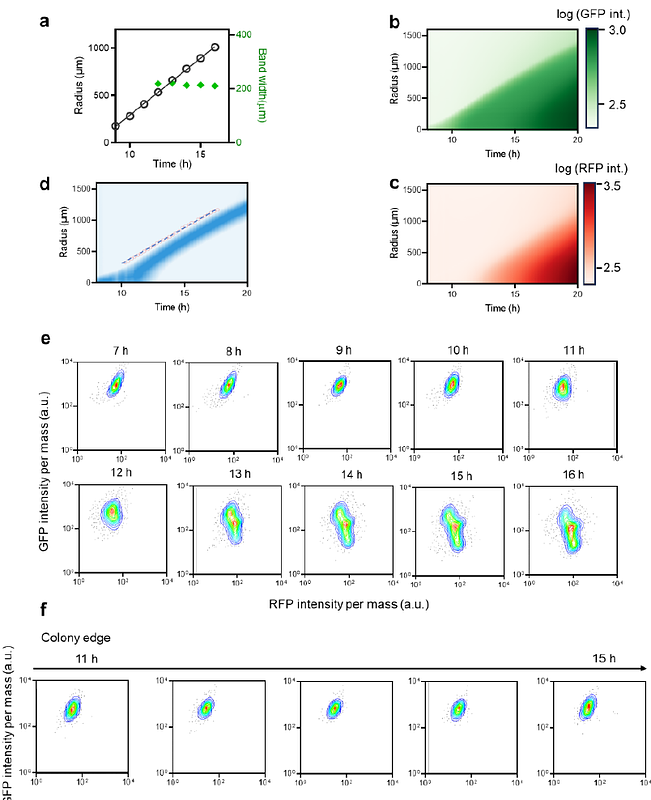Colony pattern development of a synthetic bistable switch

Colony pattern development of a synthetic bistable switch
Chu, P.; Zhu, J.; Ma, Z.; Fu, X.
AbstractMicrobial colony development hinges upon a myriad of factors, including mechanical, biochemical, and environmental niches, which collectively shape spatial patterns governed by intricate gene regulatory networks. The inherent complexity of this phenomenon necessitates innovative approaches to comprehend and compare the mechanisms driving pattern formation. Here, we unveil the multistability of bacterial colony patterns orchestrated by a simple synthetic bistable switch. Utilizing quantitative imaging and spatially resolved transcriptome approaches, we explore the deterministic process of a ring-like colony pattern formation from a single cell. This process is primarily driven by bifurcation events programmed by the gene regulatory network and microenvironmental cues. Additionally, we observe a noise-induced process amplified by the founder effect, leading to patterns of symmetry-break during range expansion. The degrees of asymmetry are profoundly influenced by the initial conditions of single progenitor cells during the nascent stages of colony development. These findings underscore how the process of range expansion enables individual cells, exposed to a uniform growth-promoting environment, to exhibit inherent capabilities in generating emergent, self-organized behaviour.


